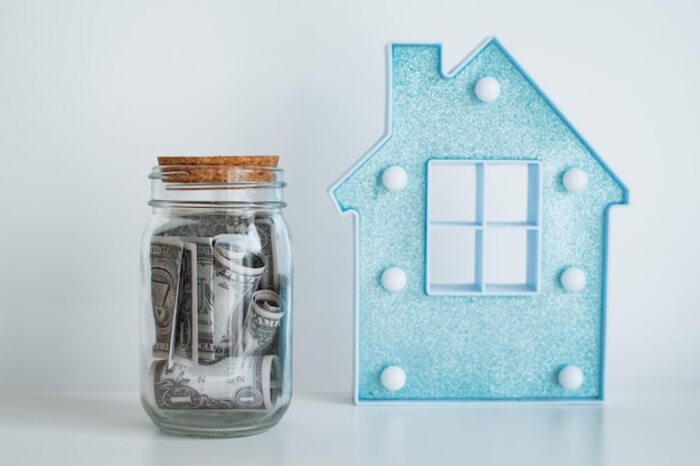Build a solid financial future while saving for your home.

Building a solid financial future while saving for your home is one of the smartest decisions you can make. In a country like Costa Rica, where investing in properties presents a valuable opportunity, understanding how to manage your finances and save effectively is key. This article will guide you through practical strategies and useful tips to optimize your savings, ensuring that every colón counts towards the purchase of that dream home. Let's start building a prosperous and stable future!
The importance of setting specific savings goals
Setting specific savings goals is essential for building a solid financial future, especially when it comes to buying a home. Clear goals act as a map that guides your efforts and allows you to measure your progress. Without a defined direction, it's easy to stray and lose motivation. For example, if your goal is to save for a down payment on a home, setting a concrete figure and a reasonable timeframe will help you stay focused on your saving efforts. This not only provides clarity on how much you need to save each month but also motivates you as you see your goal coming closer.
Additionally, specific goals foster financial discipline. By having a specific amount and a deadline in mind to reach your objective, you can implement more effective strategies to manage your daily expenses. This may include cutting unnecessary costs or seeking additional income opportunities. It is also helpful to break that larger goal into smaller, more achievable sub-goals, which makes it easier to track progress and makes the process less overwhelming. In this way, each small achievement on the way to your final goal becomes a reason to celebrate and an additional boost to continue building that solid financial future you desire.
2. How to create an effective budget for saving
To create an effective budget that helps you save for your home, it is essential to start by identifying your monthly income and expenses. Take an inventory of all your income sources, such as your salary, freelance work, or any other form of earnings. Then, record your fixed and variable expenses; this includes everything from your current rent or mortgage to food, transportation, and entertainment expenses. By having a clear view of your financial situation, you will be able to determine how much money you can allocate to savings each month without compromising your basic needs.
Once you have clarity about your income and expenses, set realistic and achievable savings goals. Define a specific percentage of your income that you want to allocate to savings for the purchase of your home; ideally, it should be at least 20% if possible. Additionally, categorize your expenses into essential and non-essential to identify areas where you can cut costs. Implementing mechanisms like the 50/30/20 rule – allocating 50% to needs, 30% to wants, and 20% to savings – can be an effective guide. Remember to review and adjust your budget regularly to adapt to changes in your financial situation and ensure you are making steady progress towards your goal.
3. Strategies to reduce unnecessary expenses
Reducing unnecessary expenses is one of the most effective ways to optimize your budget and increase your savings capacity. A key strategy is to conduct a detailed analysis of your monthly expenses. Classify your outgoings into categories such as essentials (rent, food, transportation) and non-essentials (entertainment, subscriptions). By identifying which expenses are superfluous, you can make informed decisions about where to cut back. For example, you might choose to cancel subscriptions that you don't use frequently or limit outings to restaurants, allowing you to allocate those savings to your home purchase fund.
Another useful strategy is to implement the "envelope system" method, where you assign a specific amount for each spending category in physical or digital envelopes. This approach helps to avoid overspending and allows you to see clearly how much money remains available for each area. Additionally, consider making more mindful purchases: before acquiring something new, ask yourself if you really need it or if you can do without it. With small modifications to your daily habits, you can free up valuable resources that will significantly contribute to your goal of building a solid financial future and saving for that desired home.
4. Savings account options and their benefits
Savings accounts are a fundamental tool for those who wish to build a solid financial future while saving for their home. There are various options in the market that cater to different needs and goals. For example, traditional savings accounts offer a basic interest rate, ideal for those seeking quick access to their funds without committing to long terms. On the other hand, high-yield savings accounts provide better interest rates, which can accelerate your capital accumulation process for purchasing a property, although they typically require a higher minimum balance.
Additionally, some banks offer specific accounts designed for home purchase, which may include additional benefits such as preferential rates or incentives for maintaining a certain balance. These options not only allow you to save more effectively but also help you establish a good credit history by demonstrating financial responsibility. Comparing different products and understanding their features is essential to choose the option that best fits your financial goals and thus bring you closer to your dream of owning a home.
5. Smart Investments: Multiplying Your Savings
Smart investments are a fundamental pillar for multiplying your savings and reaching your financial goals, especially when it comes to acquiring a home. Instead of letting your savings stagnate in a traditional savings account, consider options like mutual funds, stocks, or real estate. These alternatives can offer significantly higher returns over the long term, which can speed up the process of reaching the amount needed for your future home. It is important to educate yourself and analyze the risks associated with each type of investment, as well as adjust your strategy according to your financial profile and goals.
Additionally, diversifying your investments can be an effective way to protect yourself against market volatility. By spreading your money across different assets, you not only maximize the possibilities for growth but also reduce overall risk. Consider creating a balanced portfolio that includes both low-risk investments, such as bonds or fixed-term deposits, and more aggressive options that could offer higher returns. Remember that every colón invested today is one step closer to that dream house; therefore, educating yourself on the best investment practices will enable you to make informed and strategic decisions to build a solid financial future.
6. Digital tools that facilitate tracking savings
To achieve effective tracking of your savings, digital tools have become indispensable allies. Financial management applications like Mint or YNAB (You Need A Budget) allow you to keep a detailed record of your income and expenses, categorize your savings, and set specific goals for purchasing your home. These platforms offer visual charts that make it easier to understand your financial habits, helping you identify areas where you can cut back and allocate more resources toward your goal of acquiring a property. Additionally, many of these tools send reminders and alerts to keep you focused on your goals.
Another valuable option is the customizable spreadsheets you can find in Google Sheets or Excel. These provide you with the necessary flexibility to design a savings plan tailored to your personal circumstances. You can create tables that include all your monthly expenses, the amounts you wish to save each month, and the estimated time to reach your goal. By visualizing your progress over time, you will not only keep your motivation high, but you will also be able to easily adjust your strategy if needed. The key is to choose the tool that best fits your lifestyle and financial needs, ensuring that each step toward your future home is clear and manageable.
7. Government programs and accessible financing in Costa Rica
In Costa Rica, various government programs are designed to facilitate access to housing and promote savings among citizens. Institutions such as the Banco Hipotecario de la Vivienda (BHVI) and the Instituto Nacional de Vivienda y Urbanismo (INVU) offer initiatives that allow Costa Rican families to access mortgage loans with preferential interest rates and affordable terms. Additionally, these programs often include subsidies that can significantly reduce the total cost of financing, representing a great opportunity for those looking to build their home without compromising their financial stability.
Another important aspect to consider is the savings mechanisms promoted by the government, such as special savings accounts dedicated exclusively to home purchases. These accounts often offer tax benefits or additional incentives that encourage a savings culture among the population. By learning about these options and taking advantage of the available tools, citizens can not only optimize their financial resources but also get closer to the dream of having their own home. Ultimately, knowing and utilizing these programs is an essential strategy within the financial plan for those who wish to build a solid future while saving for their ideal home.
8. The relevance of credit in the purchase of a home
The relevance of credit in the purchase of a home cannot be underestimated, as it acts as a fundamental pillar in the property acquisition process. A good credit history will not only allow you to access more favorable interest rates but will also increase your chances of approval for a mortgage loan. In this regard, it is essential that you manage your finances wisely before starting your house search. Maintaining a low level of debt and making timely payments on your financial obligations will help build a solid credit profile, which is crucial to facilitating the purchase of your home.
Additionally, understanding the different types of credits available and how they work can make a significant difference in your ability to finance your home. There are various options, such as fixed or variable mortgages, each with its own advantages and disadvantages. By being well-informed about these alternatives and choosing the one that best fits your needs and financial situation, you can optimize both your investment and the time needed to achieve the goal of homeownership. Thus, by approaching the topic of credit with knowledge and strategy, you will be taking solid steps toward building that strong financial future you desire while saving for your home.
9. Tips to maintain motivation during the saving process.
Maintaining motivation during the saving process can be a challenge, especially when results are not immediate. An effective strategy is to set realistic and achievable goals that allow you to see progress in a tangible way. For example, breaking your main goal into smaller stages, such as saving a specific amount each month or reaching a certain amount in three months, will help you stay focused and celebrate each achievement. Additionally, consider creating a progress visualizer, such as a chart or a savings jar that fills up with each contribution; this will constantly remind you of how far you have come towards your dream of having your own home.
Another way to maintain motivation is to surround yourself with a positive environment that encourages your efforts to save. Share your goals with friends and family so they can support and encourage you to keep going. You can also seek out online groups or communities where people share their experiences about saving for a home; this exchange can provide you with valuable advice and inspire you by seeing the achievements of others. Remember that tough moments are normal on any path to financial success, so always keep your ultimate goal in mind: building that solid financial future while saving for your dream home.
10. How to avoid common mistakes when saving for your home
Saving for your home is a process that can be full of pitfalls if not handled properly. A common mistake is not setting a clear and realistic savings goal. Without a specific target, it’s easy to divert funds towards unnecessary expenses or simply not save enough. To avoid this, define how much you need and the timeframe in which you want to reach that amount. Having a concrete goal will allow you to create a more effective savings plan and keep you motivated on the path to buying your home.
Another fundamental aspect to consider is the lack of diversification in your savings. Many choose to keep their money in accounts that offer low interest rates, which limits its growth. Research options like housing-specific savings accounts, mutual funds, or even safe investments that could offer better returns. Also, make sure to regularly review your progress and adjust your strategies as necessary. Being alert to opportunities and being flexible will help you maximize your savings and avoid common mistakes that could delay your dream of owning a home.



